 Pop Shop II, Plate IV © Keith Haring 1988
Pop Shop II, Plate IV © Keith Haring 1988Live TradingFloor
Urban and contemporary artists have been designing album covers for the stars for many years. We might think about record sleeves and covers as perhaps some of the most ubiquitous forms of artwork, the kind that alongside billboards and perhaps even brand packaging infiltrates our daily life to the point we become almost unaware of it.
Is it due to this reproducibility, this availability then, that we are far more likely to see Andy Warhol’s Marilyns on the gallery wall than his Velvet Underground Banana? Or Hirst’s Spots rather than the Splatters that adorn his cover art for Eminem? With this in mind, here we look at some of our artists’ forays into the music industry and what happens when visual meets musical.
Andy Warhol for 'The Velvet Underground + Nico'
At number one, it just had to be Warhol. Not only the artist for the Velvet Undergrounds’ studio album, Warhol was the only credited producer on the album, despite the fact that he had rather little influence on the band’s musical output. The record’s release was actually delayed in order for Warhol to create the now infamous banana print that would become the album sleeve, which originally came with a sticker that could be peeled off to reveal the fruit underneath.
 Image © Kids See Ghosts 2018 / Kids See Ghosts © Takashi Murakami 2018
Image © Kids See Ghosts 2018 / Kids See Ghosts © Takashi Murakami 2018Takashi Murakami for 'Kids See Ghosts'
Made for Kanye West and Kid Cudi’s only studio album under the moniker Kids See Ghosts, Takashi Murakami created the eponymously titled record sleeve. The artist took inspiration from Hokusai’s Thirty-Six Views of Mount Fuji and rudimentary sketches from the rapper/producers themselves. The psychedelic cover leans into the ‘ghost’ references within the album itself, only emphasised by the strangeness of the two white floating figures. This is not the first time Murakami has worked with West, having created the cover for the hip-hop star’s third studio album Graduation.
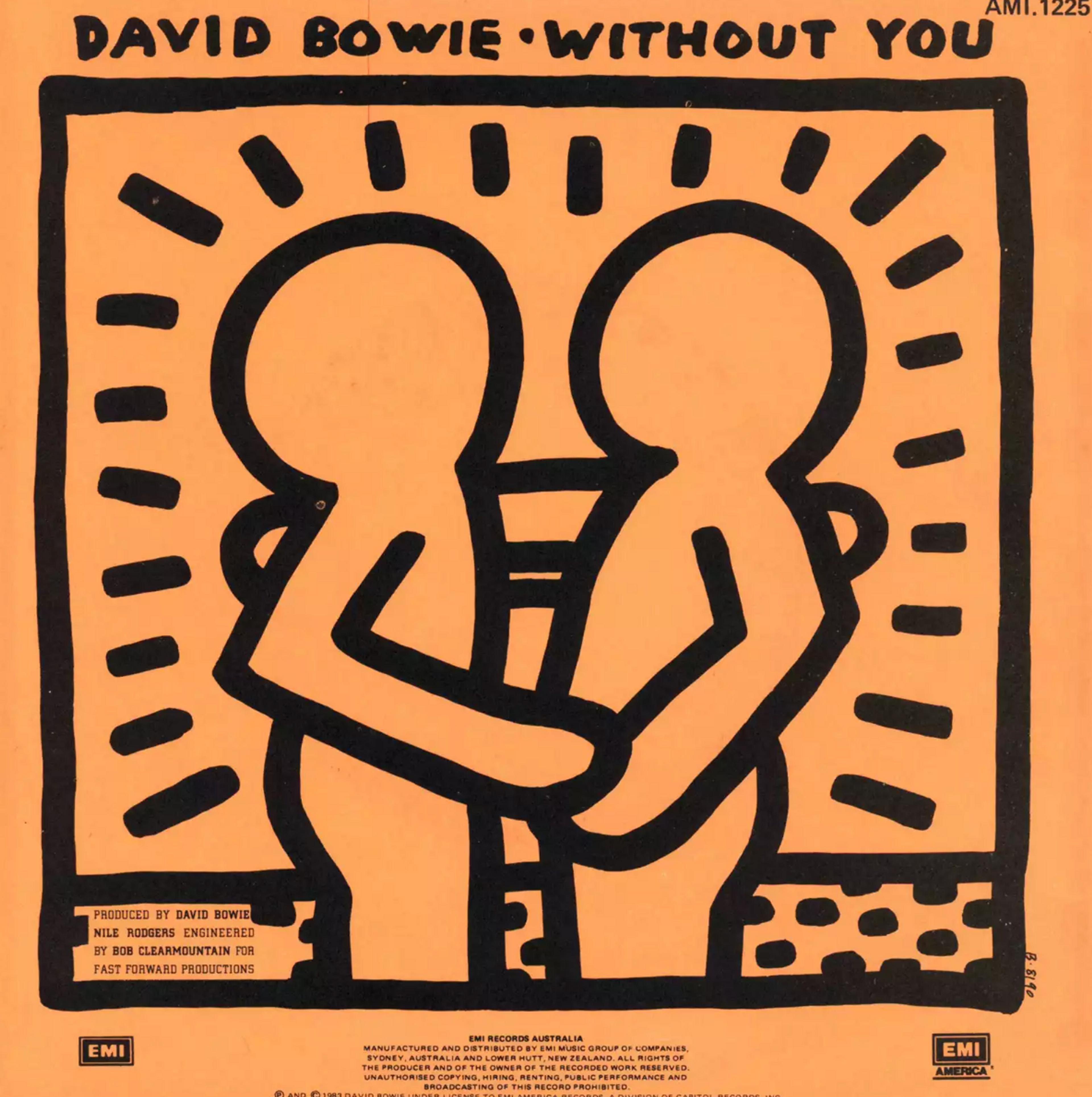 Image © David Bowie 1983 / Without You Cover © Keith Haring 1983
Image © David Bowie 1983 / Without You Cover © Keith Haring 1983Keith Haring for David Bowie's 'Without You'
A single included on the historic 1983 Let’s Dance album, David Bowie’s Without You cover was designed by Keith Haring. Unmistakable in its graphic simplicity and signature vibrating lines, Haring’s limited edition sleeves are now highly sought after, having first been pressed in Japan in 1983. Throughout his short life, Haring was constantly entwined with the New York music scene, from Grace Jones to Run DMC, and remains one of the most influential artists of the 1980s. Haring’s work continues to guide pop culture today, and Without You only emphasises his enduring ability to evoke emotion with only the simplest of illustrations.
 Image © Lady Gaga 2013 / ARTPOP © Gerhard Richter 2013
Image © Lady Gaga 2013 / ARTPOP © Gerhard Richter 2013Jeff Koons for Lady Gaga's 'ARTPOP'
Straddling the boundaries between art, music, performance and genre Lady Gaga is no stranger to transcending convention. Proclaiming in the ARTPOP single Applause, “One second I’m a Koons then suddenly the Koons is me,” it is only fitting that Jeff Koons himself created her album cover, in doing so, fulfilling Gaga’s prophecy. The work is an explosion of collaged art-historical references, Jeff Koons’ own sculptures and Gaga herself, inserted as a sphinx-like, venus-parallel that truly does suggest a merging of all that is art and pop.
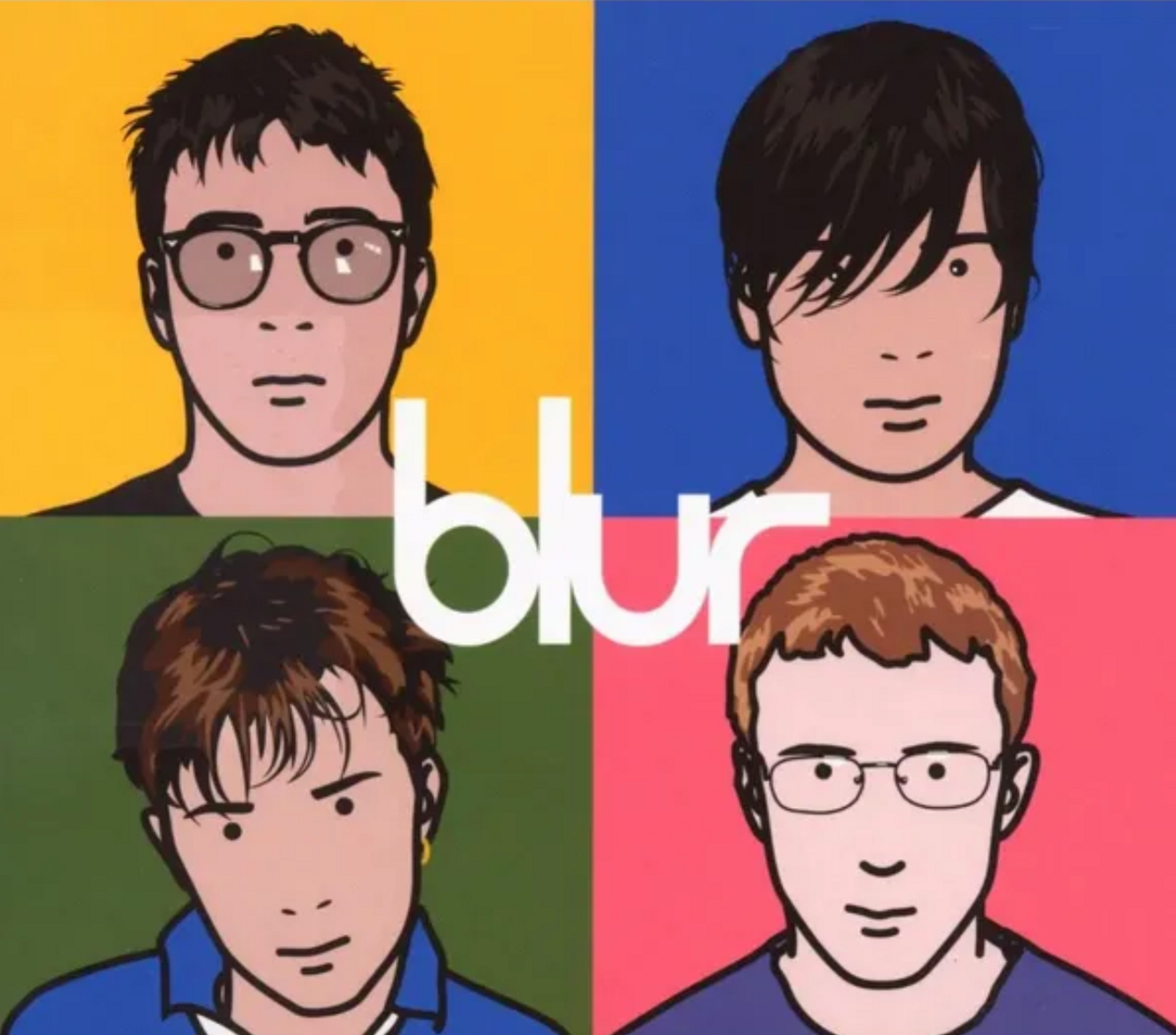 Image © Blur 2000 / Blur Portraits © Julian Opie 2000
Image © Blur 2000 / Blur Portraits © Julian Opie 2000Julian Opie for Blur's 'Best of Blur'
The prolific portrait and digital artist Julian Opie created the 2000 Best of Blur cover using four images of the band members in his signature, simplified style. The portraits themselves now hang in the National Gallery, and this sleeve has become known as one of the most iconic to come out of the early noughties. An artist who rejects easy categorisation, Opie’s portraits are testament to his unique form of bright, saturated, minimalism.
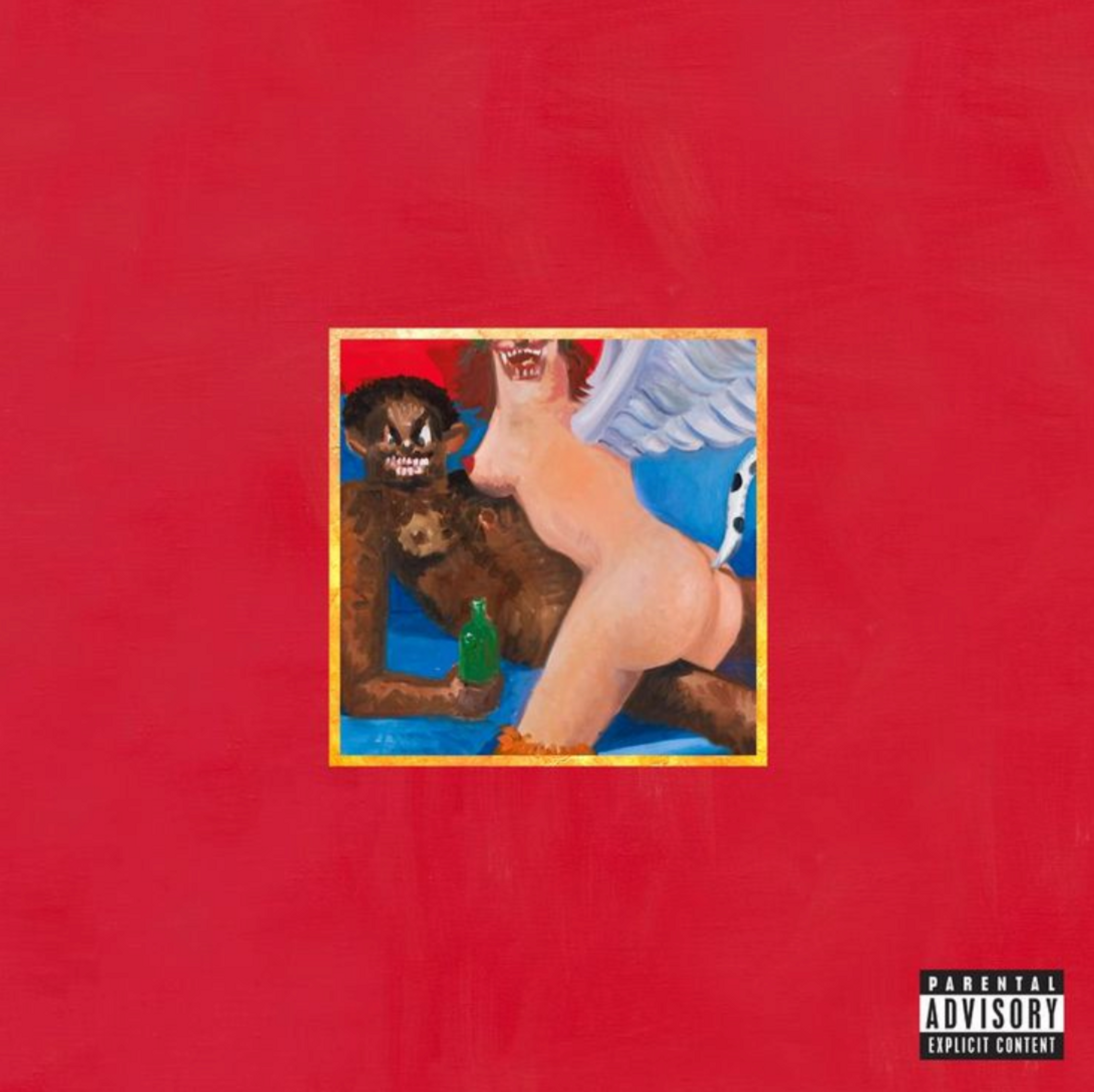 Image © Kanye West 2010 / Cover for My Beautiful Dark Twisted Fantasy © George Condo 2010
Image © Kanye West 2010 / Cover for My Beautiful Dark Twisted Fantasy © George Condo 2010George Condo for Kanye West's 'My Beautiful Dark Twisted Fantasy'
George Condo actually created six different versions of the 2010 Kanye West album cover for My Beautiful Dark Twisted Fantasy, all of which explore the layers of Kanye’s own personality combined with Condo’s own brand of ‘psychological cubism.’ The final image is a particularly disturbing scene where Kanye clutches a beer bottle and lies pinned beneath a harpy-like, nude female figure. Used for the cover, it has then been pixelated to avoid censorship complaints, (an interesting choice when one considers Kanye’s lyrics).
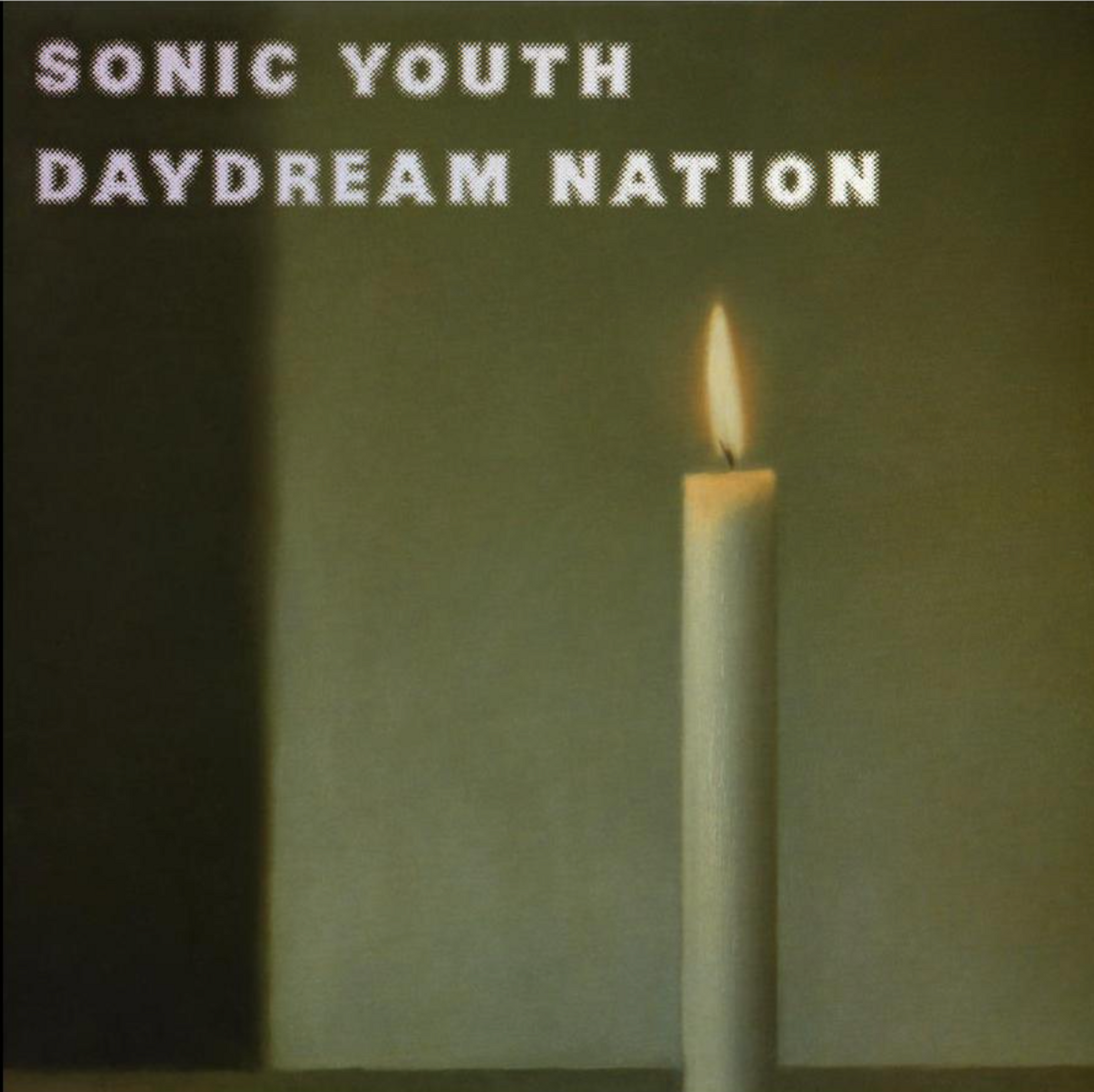 Image © Sonic Youth 1988 / Kerze © Gerhard Richter 1983
Image © Sonic Youth 1988 / Kerze © Gerhard Richter 1983Gerhard Richter for Sonic Youth's 'Daydream Nation'
As enduring an image as the album itself, Gerhard Richter’s 1983 painting Kerze, graces the cover of Sonic Youth’s fifth studio release, Daydream Nation. The album title comes from a lyric in the song Hyperstation, and the dense, layered, alternative nature of the album itself is reflected in the ambiguity of Richter’s painting. Kerze itself also realised $16.6 million at auction when it was sold in 2011, and remains one of the artist’s most recognisable works.
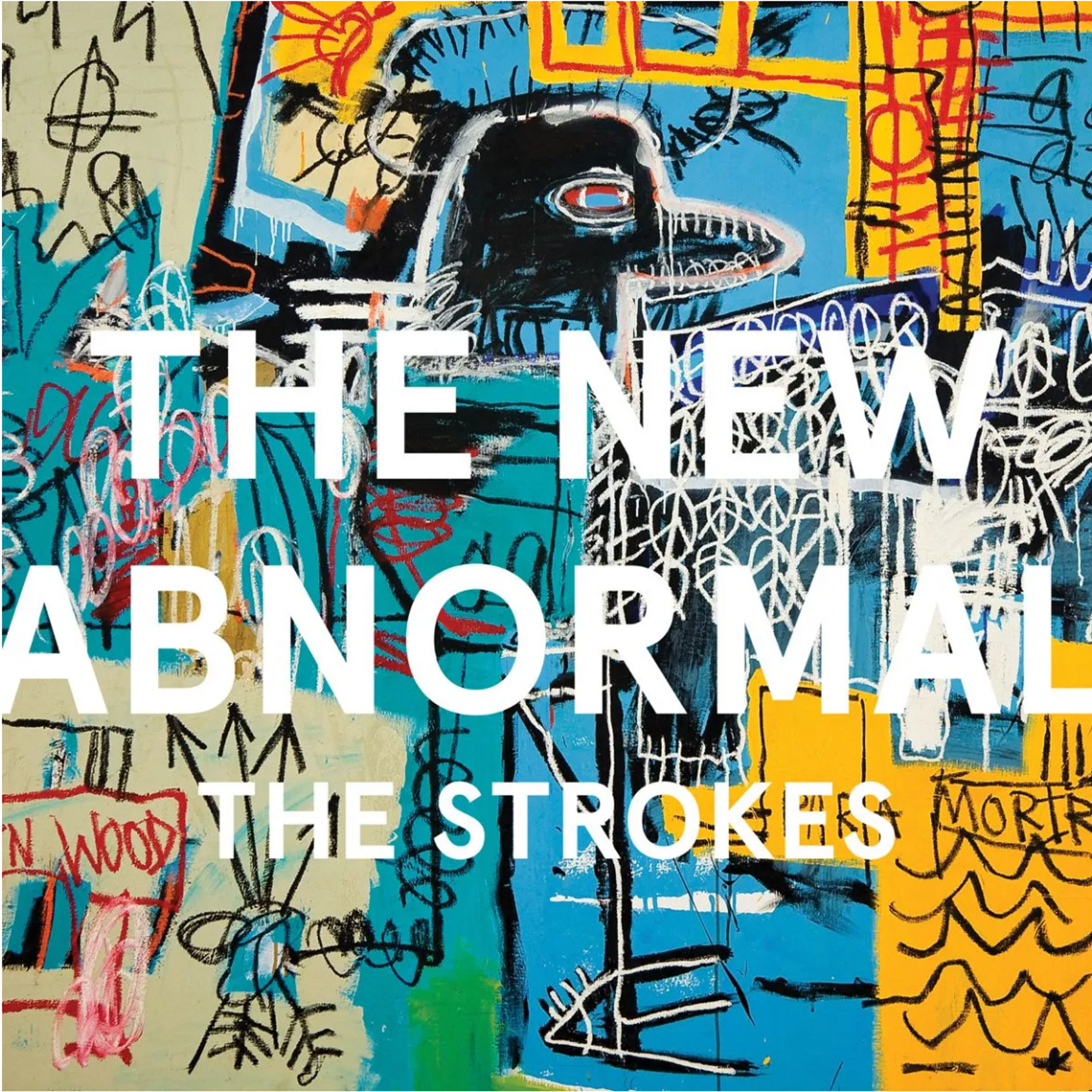 Image © The Strokes 2020 / Birds on Money © Jean-Michel Basquiat 1981
Image © The Strokes 2020 / Birds on Money © Jean-Michel Basquiat 1981Jean-Michel Basquiat for The Stroke's 'New Abnormal'
For Basquiat fans with a keen eye, this section of his 1981 Birds on Money painting, used by The Strokes for their 2020 comeback album, The New Abnormal, is an easy spot. The original painting is in fact inspired by jazz legend Charlie Parker, whom Basquiat has depicted as a ‘yardbird,’ nodding the musician’s nickname. Strokes frontman Julian Casablancas stated that the grammy-nominated album’s title refers to a kind of ‘threat to your reality’ - a notion that could perhaps equally be applied to the disorienting nature of Basquiat’s painting here too.
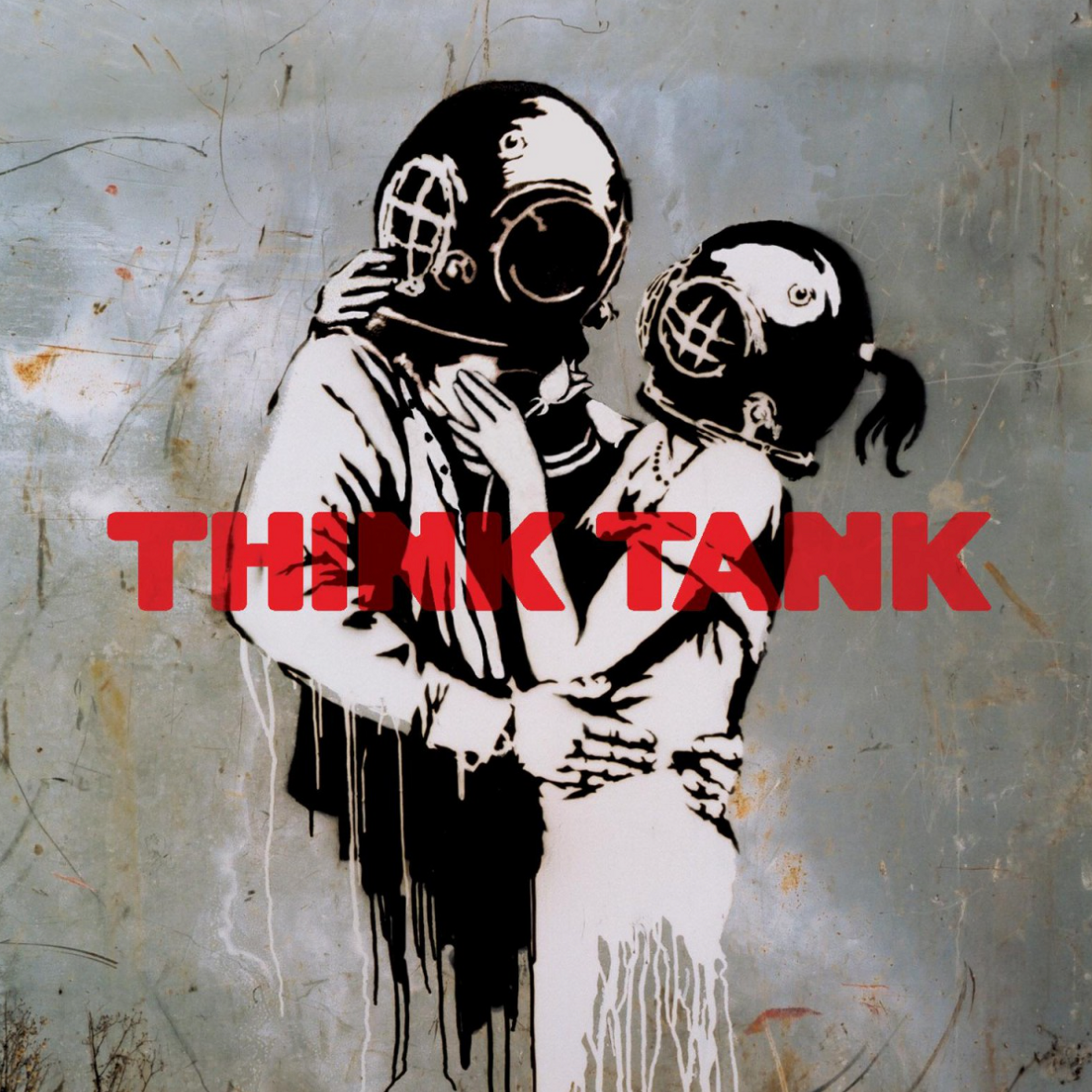 Image © Blur 2003 / Think Tank © Banksy 2003
Image © Blur 2003 / Think Tank © Banksy 2003Banksy for Blur's 'Think Tank'
Another Blur entry here, but this time created by Banksy himself. Though typically adverse to creating commercial artwork, Banksy did allow Blur to pay him for their 2003 Think Tank cover art. Depicting a couple wearing old-school diving helmets, locked in passionate embrace, the title of the band’s seventh studio album cuts across the pair in striking red letters. The band’s frontman Damon Albarn describes this more conceptual album as being about ‘love and politics,’ themes we know are also central to Banksy’s oeuvre. Indeed, it seems Banksy himself justifies his commission based on this, stating “If it’s something you believe in, doing something commercial doesn’t make it shit just because it’s commercial.”
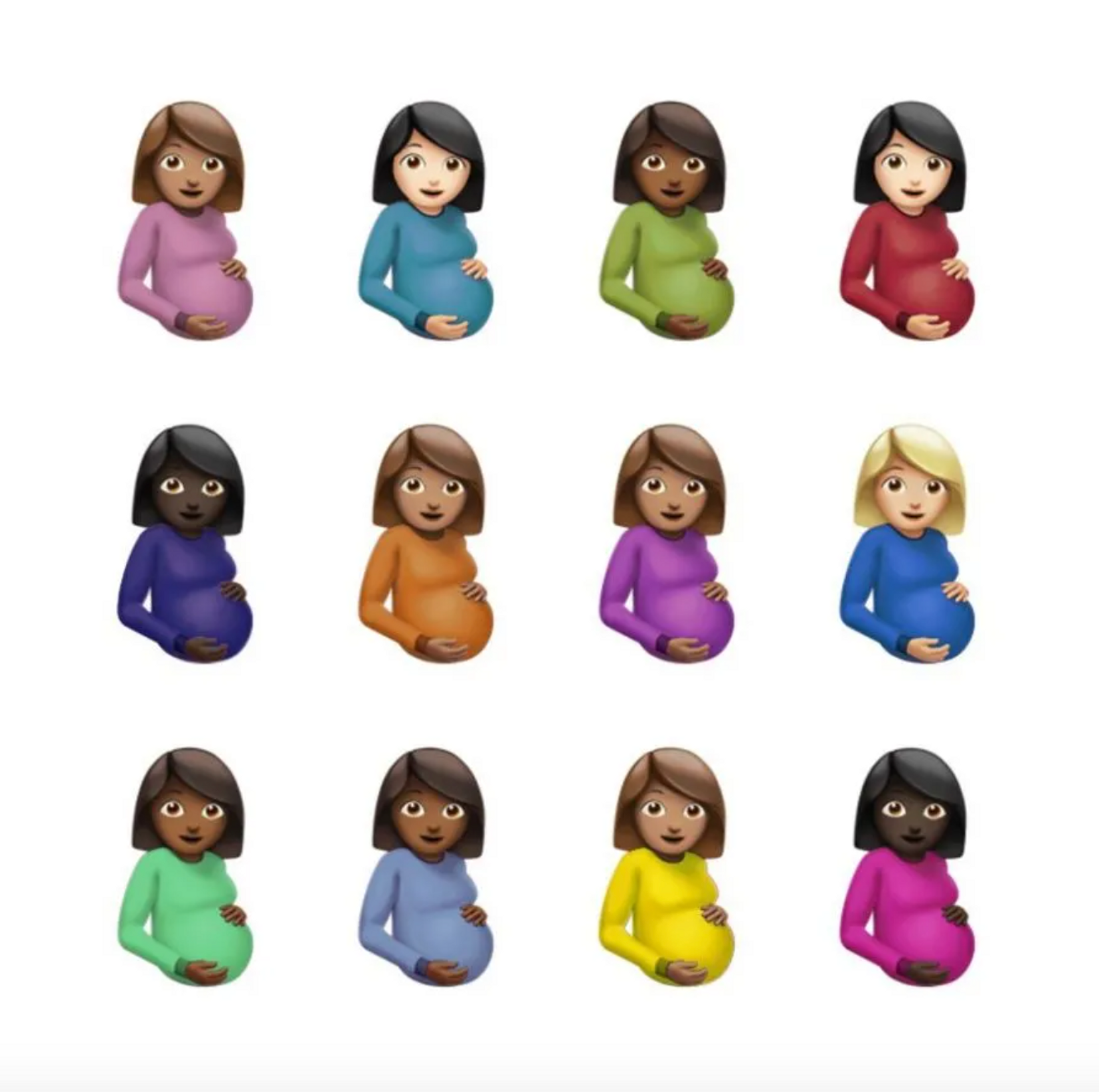 Image © Drake 2021 / Certified Lover Boy © Damien Hirst 2021
Image © Drake 2021 / Certified Lover Boy © Damien Hirst 2021Damien Hirst for Drake's 'Certified Lover Boy'
Hardly the first time Hirst has created artwork for musical mega-stars, (see the Red Hot Chili Peppers’ ‘I’m with you,’ or his recent redesigns of Eminem’s entire discography,) the artist’s bizarre cover for Drake’s most recent album Certified Lover Boy (2021) is one of his more divisive - at least in terms of reception.
We can see the immediate reference to Hirst’s Spot paintings in the meticulously spaced, different coloured emoji women, particularly if one squints their eyes. However, the ambiguity of the cover art itself led to it being described as everything from ‘corny’ to an ‘abomination’ by fans and critics alike. It seems that ultimately, the one thing you can always rely on when it comes to employing Damien Hirst, is controversy and, in fact, the artist has since doubled down on the CLB artwork, releasing Great Expectaitons, (a series of 10,000 free NFTs based on the cover) later that same year.






